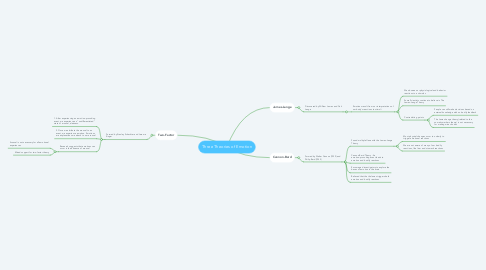
1. Two-Factor
1.1. Formed by Stanley Schachter and Jerome Singer
1.1.1. 1. After experiencing an emotion-provoking event, we experience an "undifferentiated" state of arousal, alertness.
1.1.2. 2. Once we attribute the arousal to an event, we experience emotion. Emotions are explanations we attach to our arousal
1.1.3. Research suggests that emotions can occur in the absence of arousal
1.1.3.1. Arousal is not necessary for all emotional experiences
1.1.3.2. Mixed support for two-factor theory
2. James-Lange
2.1. Discovered by William James and Carl Lange
2.1.1. Emotions result from our interpretations of our body's reactions to stimuli
2.1.1.1. We observe our physiological and behavior reactions to a stimulus
2.1.1.2. Some Scientists continue to believe in The James-Lange Theory
2.1.1.3. Contradicting points
2.1.1.3.1. People can still make decisions based on external knowledge with no bodily feedback
2.1.1.3.2. The James-Lange theory (related to the somatic markers theory) is not necessary for making wise choices
3. Cannon-Bard
3.1. Formed by Walter Cannon (1929) and Philip Bard (1942)
3.1.1. Found multiple flaws with the James-Lange Theory
3.1.1.1. Most physical changes occur too slowly to trigger emotional reactions
3.1.1.2. We are not aware of many of our bodily reactions, like liver and stomach reactions
3.1.2. Cannon-Bard Theory - An emotion-provoking event leads to emotion and bodily reactions
3.1.3. Encouraged investigators to explore the bases of emotion in the brain
3.1.4. Believed that the thalamus triggers both emotion and bodily reactions
